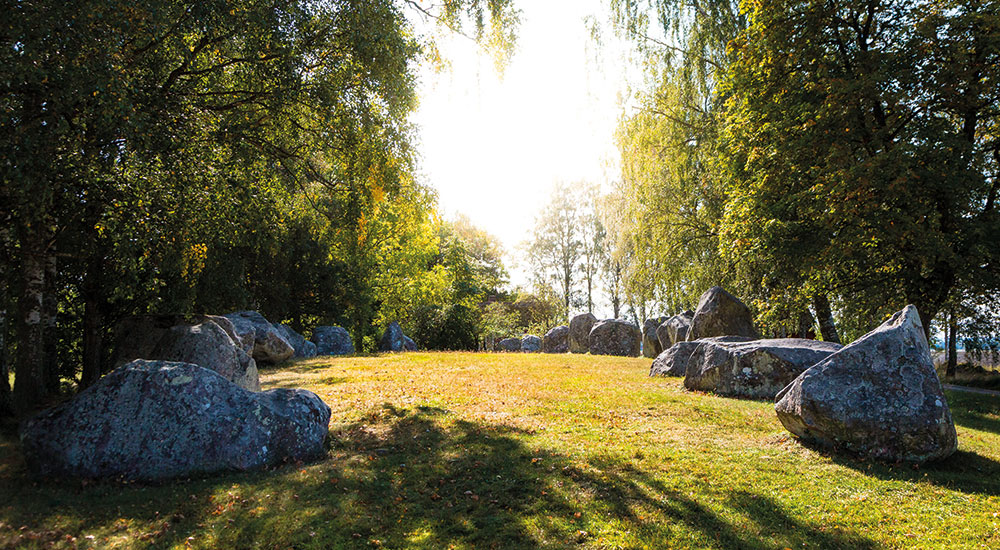
At Askeberga there are 24 gigantic stone blocks, each weighing between 25 and 30 tonnes. They are arranged in a rough semi-circle that is 54 metres long and 18 metres wide.
The site has been a gathering place for people in the region since ancient times. No one has yet given a credible explanation for this enormous stone monument, which is unlike any other in Sweden. The monument is sometimes referred to as a ship setting – in which case it would be the second largest in Sweden after Ales Stenar in Skåne – and sometimes a judge circle, but neither is correct. The bow and stern stones that are characteristic of a ship settings are missing, while judge circles are always considerably smaller.
Askeberga has not been systematically investigated. The lack of archaeological studies means that we cannot estimate the age of the monument. The common view that the stones were brought here during the early Iron Age (around 500‑1000 CE) is just an educated guess. Similarly, no one knows where the stones came from. Evidently they were hauled here. One hypothesis is that they were taken from a location a few hundred metres south-east of the stone circle, but they could also have been transported over a longer distance from various locations in the region.
When was the stone circle erected? And why? We can assume that this was an important gathering place for local people, but we do not know if it was a market, a court or a place of ritual. This means that Askeberga is still a riddle waiting to be solved.


